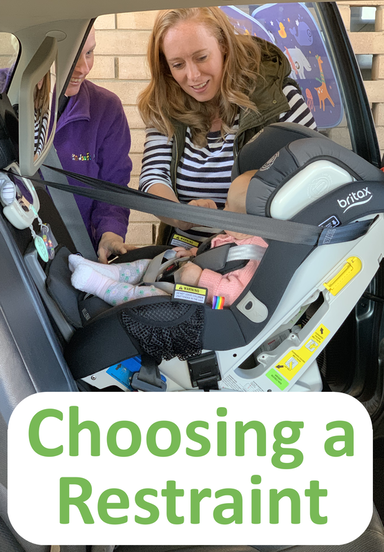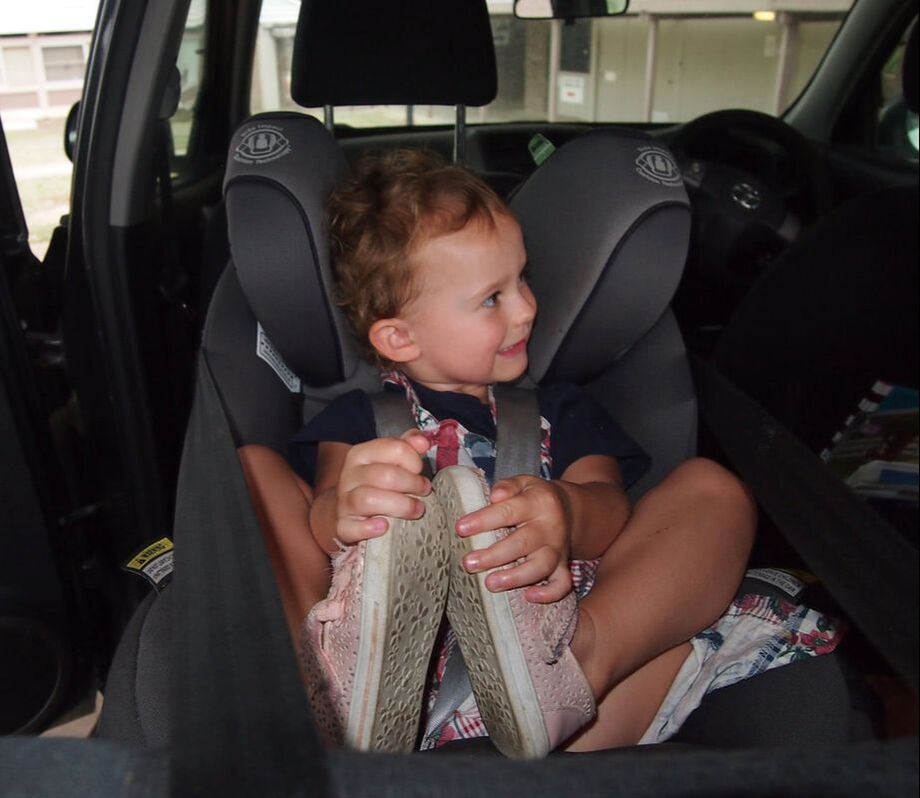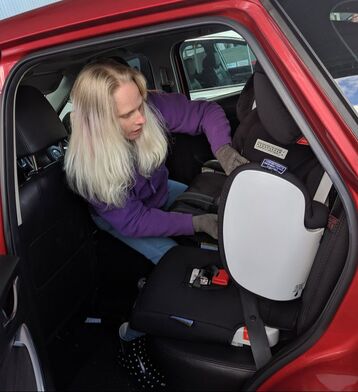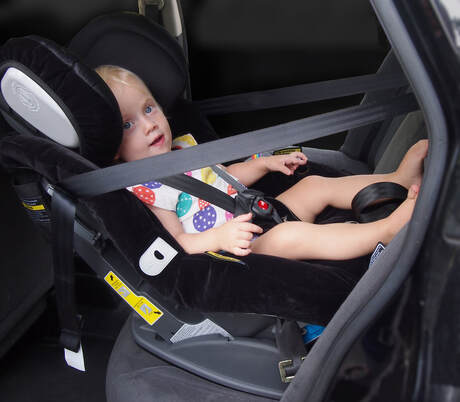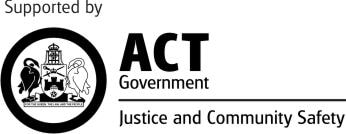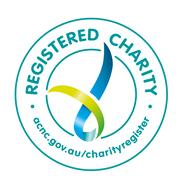|
STAGES OF CAR SEATS
|
TYPES OF RESTRAINTS:
Rear-facing Capsule
0-4 Years Convertible Car Seat in Forward-Facing Mode
Booster 0-8 years Car Seat in Booster mode
|
It’s important to not treat transitioning a child to the next stage of car seat as a milestone but more as a necessary step once they have completely outgrown their restraint.
|
CHECK THE CHILD'S SIZE
Low-birth weight and smaller babies Not all car seats will give the safest harness fit for babies under 3.5kgs. Follow our Low Birth Weight Step By Step guide to check that the carrier or car seat is right for your baby. Contact Kidsafe ACT for more information, advice and alternative carriers or car seats if your baby is too small for their seat or carrier. Height markers In 2010 shoulder height markers were introduced into the Australian Standard for Child Restraints. Car seats began being manufactured with shoulder height markers rather than weight limits. These markers make it easy to see when a child is ready to move in to or out of their car seat or booster seat, as well as, whether the child should be rear or forward-facing, if a child is ready to switch to booster mode, or if a child has out grown their car seat all together. It’s important to note that ages on car seats are approximate and that the height markers are not set to the same height on all seats meaning some will last a longer than others. Before you purchase a seat sit the child in it to see how far their shoulder is from the height marker. You don’t want the child to outgrow their seat before they are ready to move into the next stage of seat so selecting a taller seat first up can save you time and money in the long run. A taller restraint is especially important if the child is tall. Please note, there are still car seats in circulation that have weight limits. If your car seat doesn’t have height markers check the instruction manual and/or stickers on the side of the seat for the car seat's weight restrictions. Contact the manufacturer for more information if there is no instruction manual or instructional stickers. Contact Kidsafe ACT for more help and advice on selecting a car seat to suit your child and your car. |
CHECK THE CAR SEAT WILL FIT IN THE CAR
The size of car seats vary significantly and not all car seats will fit in all cars. It is important to try a seat in the car before you purchase to ensure it fits safely. Always check the vehicle's user manual before fitting a car seat for any instructions or restrictions specific to the car. If using a rear-facing seat with an extendable headrest it is a good idea to try the seat in the car with the headrest extended to its highest rear-facing level to make sure the front seat of the vehicle will not be wedged up against the car seat and that either the driver or the passenger in front has enough room. Some forward-facing car seats can have a poor fit in vehicles where the vehicle’s headrest cannot be removed. The vehicle headrest can push the top of the car seat forward and can restrict how far an adjustable headrest can be moved up as the child grows or put pressure on the restraint's headrest once moved up resulting in damage to the child's car seat, in turn reducing the safety of the seat in a crash. A different model of seat may sit better in the car, so it's worth researching before purchasing. 3 across the back If 3 car seats need to fit next to each other in the car it is important to select the right car seats so that they fit safely. A car seat advertised as narrow may not always be the best option as it can come down to shape and what other seats are in the car. Booster seats often won’t work in a 3 across configuration even though they can be very slim. You need to have access to the seat belt buckle to buckle the seat belt in every trip when using a booster seat and with three seats sitting next to each other the buckle is often not accessible. Type G car seats that can harness children up to 8-10 years are a good choice for fitting 3 across as once they have been fitted there is no need to reach the seat belt buckle each trip. There are several things to check for when fitting 3 seats across the back including:
|
RECOMMENDED CAR SEAT TYPES BY STAGE
|
Rear-facing
A1/0 - Low-birth weight carriers/car seat Babies born prematurely or that have a low-birth weight often require a specialised car seat to ensure a safe harness fit. Low-birth weight carriers and car seats are designed and crash tested to suit smaller babies. The harness can be adjusted at the hips, crotch and shoulders for the safest possible fit for the baby. A harness that does not fit correctly can lead to injuries, including from the harness, allowing excess movement of the baby during a crash, or result in them not being held in the seat during a crash. Sometimes infants who are over the 2.5kg low birth weight guide but are under 3.5kg will still not fit in some types of restraints. Check out our Step by Step Low Birth Weight Babies guide to see if you baby fits in their car seat. A4 - Rear-facing up to 2-3 years old* (0-4 years* convertible car seat) These car seats have three shoulder height markers to give you the option of keeping a child rear-facing for longer. Lowest marker - while the child’s shoulders are below the bottom marker the child must travel rear-facing (approx. 6-12 months*). A child can continue to travel rear-facing until their shoulders reach the middle shoulder marker. This gives you the option of keeping the child rear-facing for much longer, up to 2 - 3 or even 4 years*. This provides superior protection to the child’s head, neck and spine by keeping them aligned and spreading the crash force evenly rather than the majority of the huge force and pressure being placed on their head, neck and spine. When forward-facing the child’s head is thrown forward during a crash which can lead to serious injuries due to their underdeveloped neck, spine and heavy head. Middle marker - when the child’s shoulders reach this marker the seat must be turned forward-facing. Top marker - shows when a child has outgrown the seat altogether. When a child has outgrown the 0-4 years car seat they can either move to a Type G restraint (see Type G in Forward Facing section) that will take them up to 8 years of age in an in-built harness (recommended) or they can move into a booster seat with a lap-sash seatbelt. *All ages advertised on car seats are approximate. The child's torso length will determine when a child has reached the limit for rear-facing, forward-facing or has outgrown a restraint altogether. |
Forward-facing
Type G - Forward-facing car seat with an in-built harness up to 8 years* These car seats have an in-built harness that enables a child to stay harnessed for up to 8-10 years of age*. A harnessed car seat is safer than a booster seat with a seat belt. The harness, when fitted and adjusted correctly, spreads the load of the impact during a crash and will stay firmly in place supporting the torso, preventing sideways rotation and limiting head excursion helping to reduce head and spinal injuries. Booster seats Type F - Booster seat up to 10 years* Most booster seats on the market are designed to accommodate children up to 7 years of age*. Choosing a booster seat that will last up to 10-12 years of age* will ensure the seat belt is positioned correctly on the child so that they do not suffer neck or internal injuries during a crash, these seats also provide side and head protection. Children should continue to use a car seat or booster seat until they meet the 5 step test even if they are over the legal age to stop using a restraint in the car (see our Step by Step 5 Step Test guide for more details). If the seat belt does not sit correctly on a child during a crash they can slide out from under the seat belt (submarining), suffer internal bleeding, or other life threatening injuries. |
USEFUL ADDITIONS
Any feature that makes a seat easy to use and adjust means that the seat is more likely to be used correctly. Correct use means safe use and the best protection for the child.
Easy-to-adjust harness
As a child grows the harness needs to be adjusted to safely fit them. Some car seats need to be removed from the car, have the harness undone and re-threaded, then the seat needs to be re-fitted into the car to change the harness level.
Seats with an easy adjust harness do not need to be removed from the car and there is no re-threading needed. The headrest can simply be moved and the harness moves with it achieving the best fit for the child’s size. Car seats with easy adjust harnesses are also a great option when the seat is being used for several children and when it needs to be adjusted often to suit each child’s size.
Slide-guard
Some booster seats come with a slide-guard. This is an extra feature that helps to hold the lap belt low on the child’s hips preventing the seat belt from riding up onto their stomach which can cause internal injuries in a crash. It also prevents submarining, which is when the child slides down in the booster causing the seatbelt to sit up on the soft part of their stomach or have the child slide out from under the seatbelt in a crash causing serious injuries.
Buckle holders
This features holds the buckles and straps to the sides of the car seat keeping them from falling under the child when they are placed into the seat. This can help prevent twists in the harness which are dangerous in a crash. A twisted harness can cause injuries to the child. For the force to be spread evenly the harness must sit flat on the child. Twists can make the harness tighten unevenly which can lead to the child not being held into the seat safely during a crash.
As a child grows the harness needs to be adjusted to safely fit them. Some car seats need to be removed from the car, have the harness undone and re-threaded, then the seat needs to be re-fitted into the car to change the harness level.
Seats with an easy adjust harness do not need to be removed from the car and there is no re-threading needed. The headrest can simply be moved and the harness moves with it achieving the best fit for the child’s size. Car seats with easy adjust harnesses are also a great option when the seat is being used for several children and when it needs to be adjusted often to suit each child’s size.
Slide-guard
Some booster seats come with a slide-guard. This is an extra feature that helps to hold the lap belt low on the child’s hips preventing the seat belt from riding up onto their stomach which can cause internal injuries in a crash. It also prevents submarining, which is when the child slides down in the booster causing the seatbelt to sit up on the soft part of their stomach or have the child slide out from under the seatbelt in a crash causing serious injuries.
Buckle holders
This features holds the buckles and straps to the sides of the car seat keeping them from falling under the child when they are placed into the seat. This can help prevent twists in the harness which are dangerous in a crash. A twisted harness can cause injuries to the child. For the force to be spread evenly the harness must sit flat on the child. Twists can make the harness tighten unevenly which can lead to the child not being held into the seat safely during a crash.

